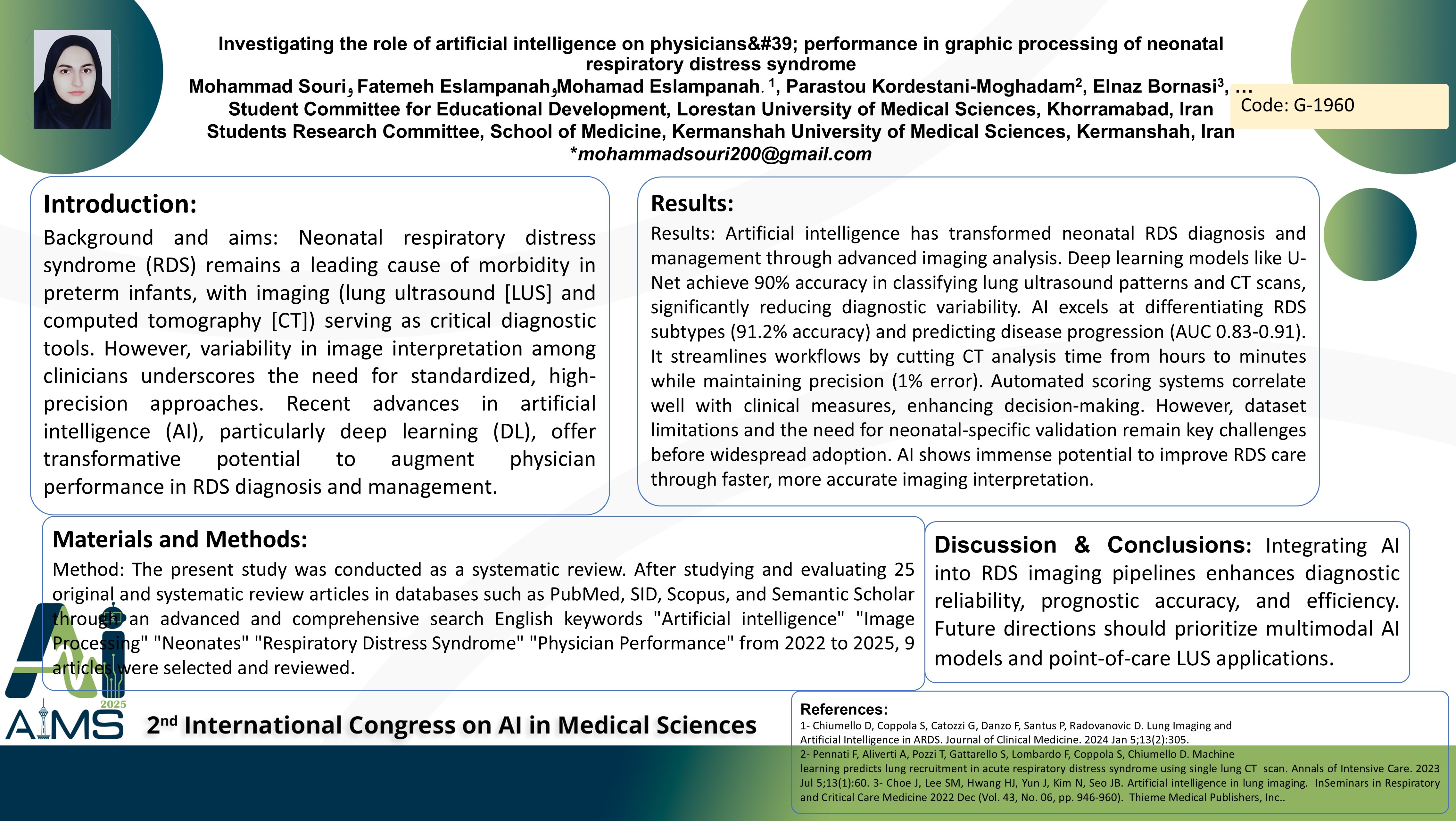بررسی نقش هوش مصنوعی بر عملکرد پزشکان در پردازش گرافیکی سندرم دیسترس تنفسی نوزادان
کد: G-1960
نویسندگان: Mohammad Souri *, Fatemeh Eslampanah , Mohamad Eslampanah, Parastou Kordestani-Moghadam, Elnaz Bornasi ℗
زمان بندی: زمان بندی نشده!
برچسب: سیستم های تصمیم یار بالینی
دانلود: دانلود پوستر
خلاصه مقاله:
خلاصه مقاله
Background and aims: Neonatal respiratory distress syndrome (RDS) remains a leading cause of morbidity in preterm infants, with imaging (lung ultrasound [LUS] and computed tomography [CT]) serving as critical diagnostic tools. However, variability in image interpretation among clinicians underscores the need for standardized, high-precision approaches. Recent advances in artificial intelligence (AI), particularly deep learning (DL), offer transformative potential to augment physician performance in RDS diagnosis and management. Method: The present study was conducted as a systematic review. After studying and evaluating 25 original and systematic review articles in databases such as PubMed, SID, Scopus, and Semantic Scholar through an advanced and comprehensive search English keywords "Artificial intelligence" "Image Processing" "Neonates" "Respiratory Distress Syndrome" "Physician Performance" from 2022 to 2025, 9 articles were selected and reviewed. Results: Artificial intelligence has transformed neonatal RDS diagnosis and management through advanced imaging analysis. Deep learning models like U-Net achieve 90% accuracy in classifying lung ultrasound patterns and CT scans, significantly reducing diagnostic variability. AI excels at differentiating RDS subtypes (91.2% accuracy) and predicting disease progression (AUC 0.83-0.91). It streamlines workflows by cutting CT analysis time from hours to minutes while maintaining precision (1% error). Automated scoring systems correlate well with clinical measures, enhancing decision-making. However, dataset limitations and the need for neonatal-specific validation remain key challenges before widespread adoption. AI shows immense potential to improve RDS care through faster, more accurate imaging interpretation. Conclusion: Integrating AI into RDS imaging pipelines enhances diagnostic reliability, prognostic accuracy, and efficiency. Future directions should prioritize multimodal AI models and point-of-care LUS applications.
کلمات کلیدی
Artificial intelligence, Image Processing, Neonates
